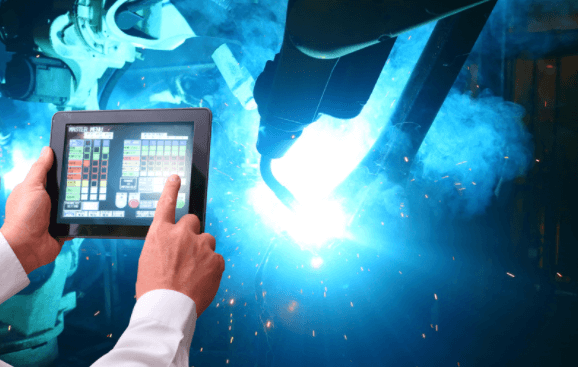MES Uptime is everything. We spend a lot of time helping our customers maximize uptime through process analysis, equipment health monitoring, reliable machines—all of the traditional ways that you’d expect. What’s new these days is that our customers now want to be able to view and manage their edge-of-network devices from a central location so they can troubleshoot as quickly as possible. Whereas in the past they might have been willing to have an automatic paging system set up to send a technician to the fault, today they want to access the device remotely and troubleshoot immediately.
Security Comes First for IIoT
In designing remote access for Industrial Internet of Things (IIoT) systems, one of the first questions that comes up is about security. Clearly, machine controls involving motion and safety can’t have even the slightest risk of outside interference. That’s why control equipment is almost always confined to the local industrial network. We never want to put the control network directly in communication with the company’s cloud or with the Internet because of security risks. We want to have a highly secure device that bridges the network with separate interfaces.
IIoT Gateways and other Network Edge Devices
On an edge device, like an IIoT gateway, one network interface communicates on the control network, while the other interface is dedicated to communicating with the Internet or the company’s intranet. With cloud-based solutions, it’s even more critical to manage those communication paths in an effective and secure way.
Safe Screen Sharing at the Edge of the Network
Most of us are familiar with cloud-based screen sharing services like GoToMeeting, Lync or Google Hangouts, which allow a remote viewer to see our screen or even take control. IT helpdesks have used these for years so that they can see what the user sees. Manufacturing needs this type of access to its edge devices. When all the data stayed inside a plant, a Lync-like approach worked fine. But as companies expand IIoT and move their data to the cloud, new methodologies are required. The data has to have a path to get from a troubleshooter in Michigan to a system deployed in Mexico, giving the Michigan viewer full access to that device without any compromise in security. What’s new these days is that our customers now want to be able to view and manage their edge-of-network devices from a central location so they can troubleshoot as quickly as possible.
Remote Access for Faster Support
We’re seeing this requirement driven by our customers not only internally, but also to suppliers like us. Without remote access, we’re often relying on descriptions of a problem via phone or email, or photos taken on a cellphone camera, or at best a screen shot. When a problem is impacting production rates, that kind of pace is unacceptably slow. Plants want us to have the ability to support solutions as deployed. We need to be able to request access from anywhere to a plant floor device without any additional hardware or software requirements, without having a third-party router in place, and without having third-party security administration. We need to have that capability built into our network edge devices so those connections can be generated.
Better Access = Better Uptime
Having remote access to edge devices anywhere in the world is allowing manufacturers and their suppliers to provide a level of service and support that we’ve never had before. It’s a game changer for improved uptime.







